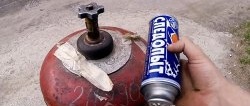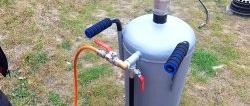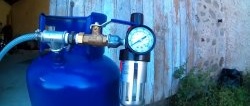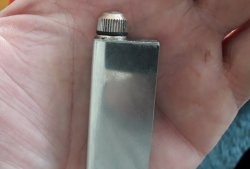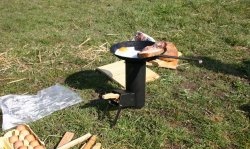How to make a compact tile for a gas canister
The so-called Turkish tourist burners are equipped with a large 5 liter gas cylinder. This makes them prohibitively large for walking and cycling. However, they are equipped with very reliable shut-off valves, which exceed the service life of tourist plates for a more compact collet chuck. If you want to combine reliability and compactness, you can convert the Turkish burner to small 220 g cylinders.

To use shut-off valves from a Turkish cylinder on a regular gas cylinder, you need to make a reliable adapter. To do this, a ring is cut out of a pipe with a diameter of 50 mm. Its height should be equal to the distance from the edging (the connection between the cylinder wall and the lid) to the upper edge of the M14 nut placed on the lid.
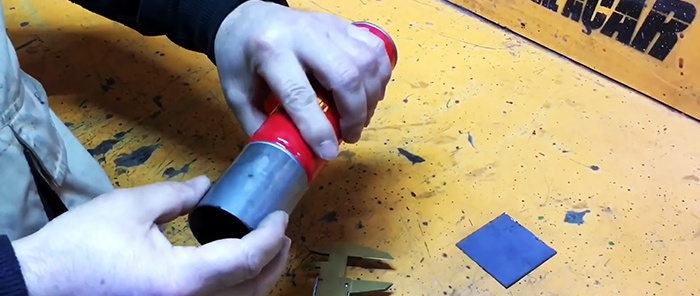
The ring is cut lengthwise and stretched a little so that it fits onto the neck of the can in front of the edging.
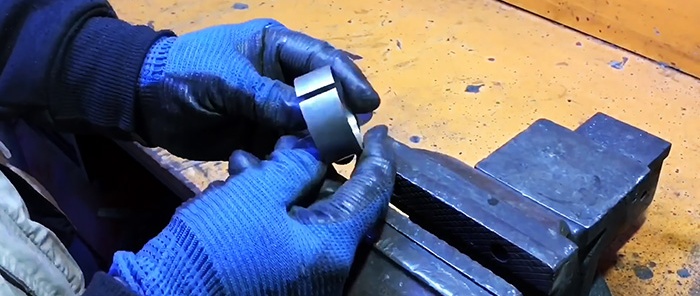
Next, one edge needs to be bent so that it can be fixed to the edging. To do this, you will need an empty, opened gas canister. A ring is put on its bottom, tightened with a tie or tied with wire, after which its edge is tapped in a circle with a hammer. As a result, on one side the ring receives a slight concavity inward.
The ring is installed on the neck of an empty cylinder with a concave position on the edging, and a circle of sheet steel is welded to it on top.
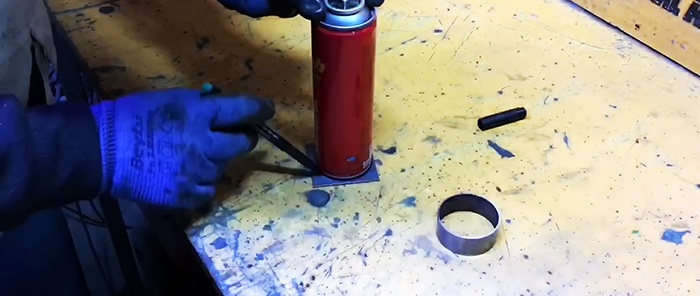
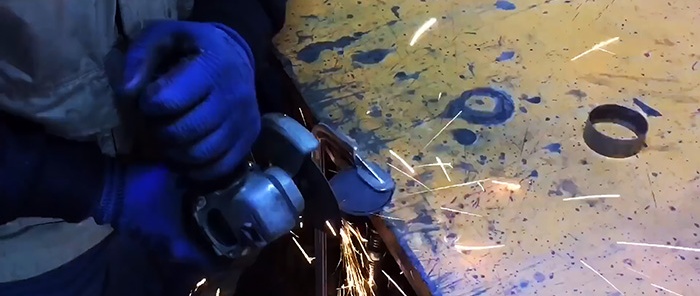
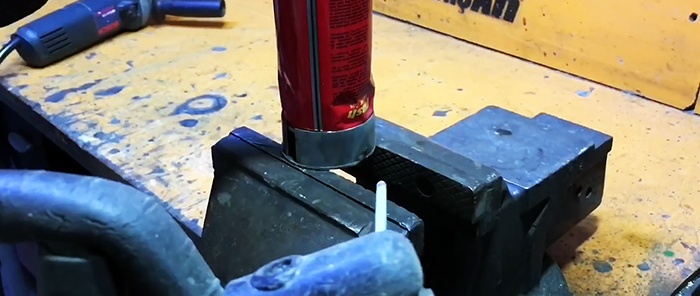
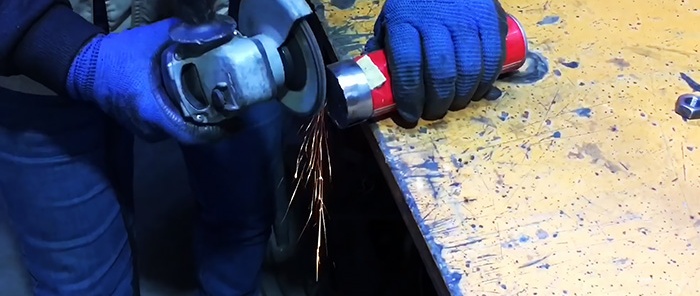
Then lugs from the strip are welded to the edges of the ring. Holes are drilled into them into which a bolt and nut are inserted. The result is a fastening clamp. You can weld a washer onto the head of the bolt to make it easier to rotate by hand. You should also weld the nut to the eye so that it does not turn.
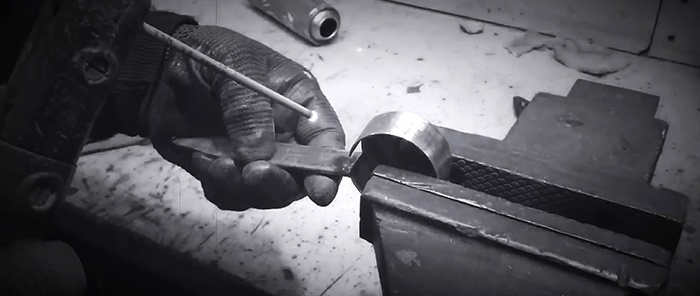
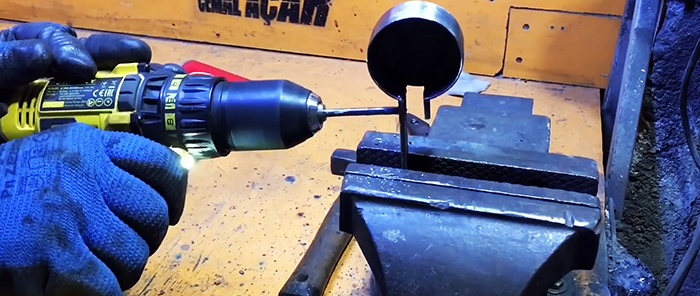
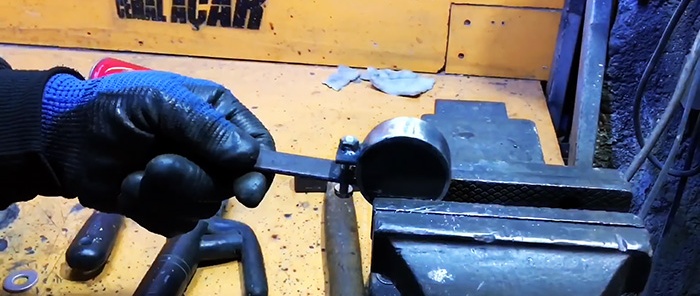
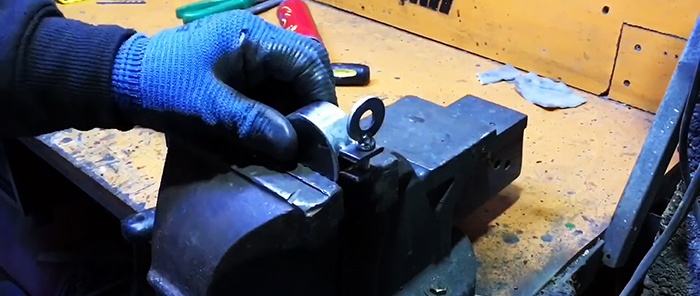
A hole with a diameter of 15 mm is made in the clamp cover. A valve from a Turkish cylinder is inserted into it, and an M14 nut is screwed onto it from the inside. After this, the nut is welded to the cover.
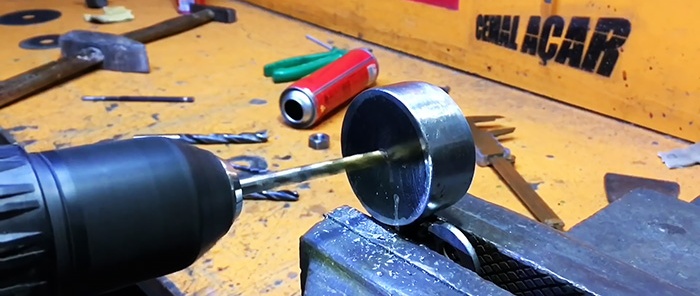
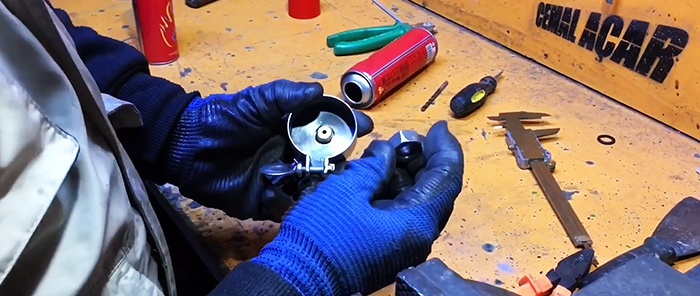
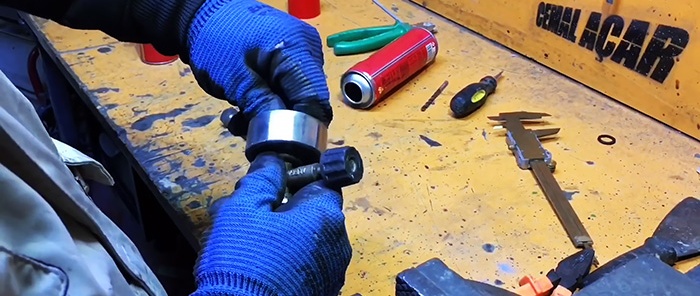
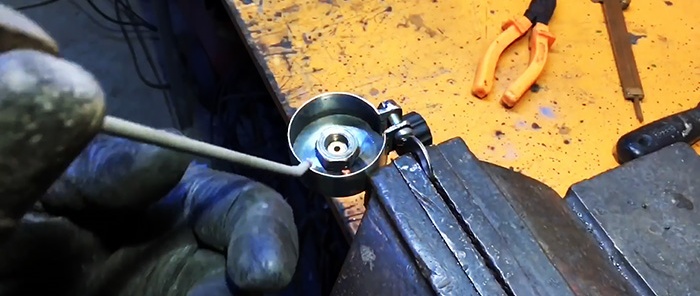
The resulting adapter can now be installed on a small cylinder and clamped onto it with a clamp, after which a tap and valve with a plate are screwed into it. To ensure a tight seal, a soft gasket should be placed between the can and the tap. Screwing in, the valve presses the valve stem, and gas is supplied to the valve.
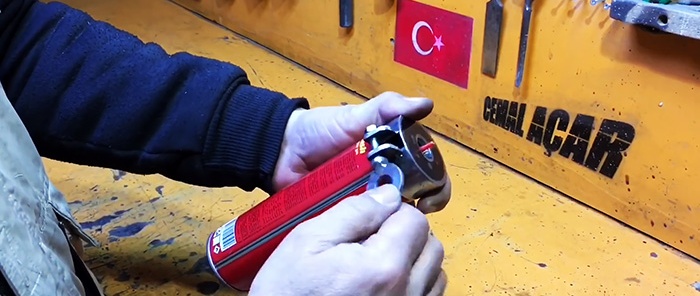
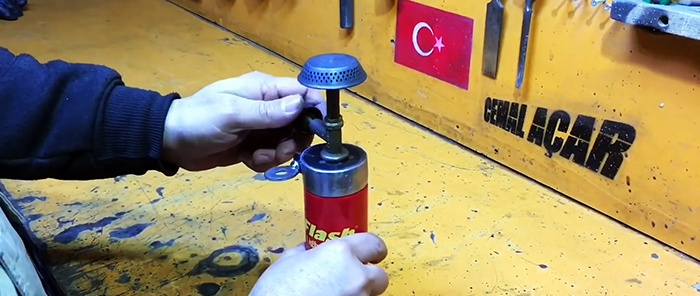
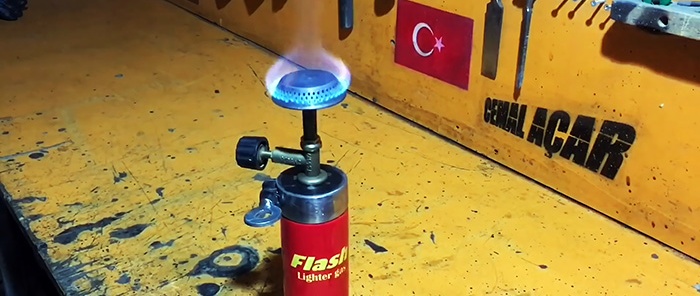
Having finished with the most complex and important part, the adapter, you can make a stand and a rack of tiles. A three-beam stand is bent from a 6 mm rod to accommodate dishes of the desired diameter. Short tubes are welded to the beams. Next, the sole is made.To do this, take a piece of pipe 50 mm long, 60-70 mm long, cut lengthwise and stretched under the body of the cylinder. It is welded into the center of a sheet steel disk, and 3 short tubes are attached to the sides of it, like on a stand. Then the racks of the required height are bent from 3 rods. They are inserted into the sole, and a stand is placed on top of them. The cylinder with a valve and a plate is placed in the central pipe on the sole.
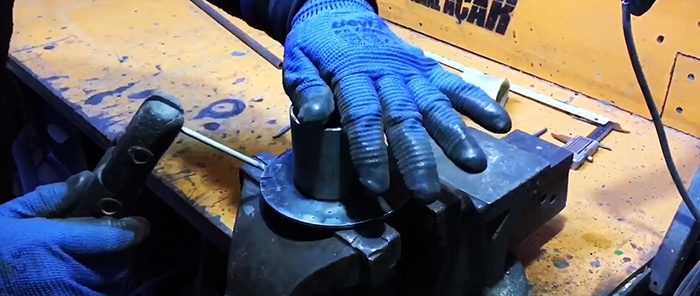
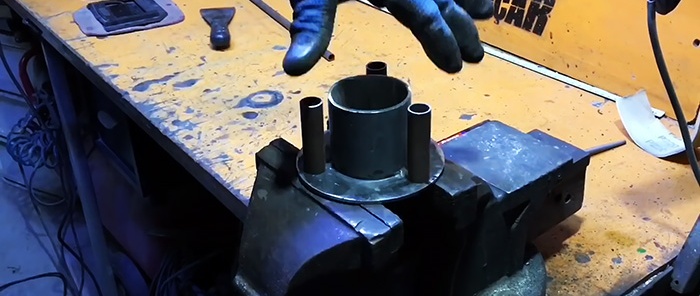
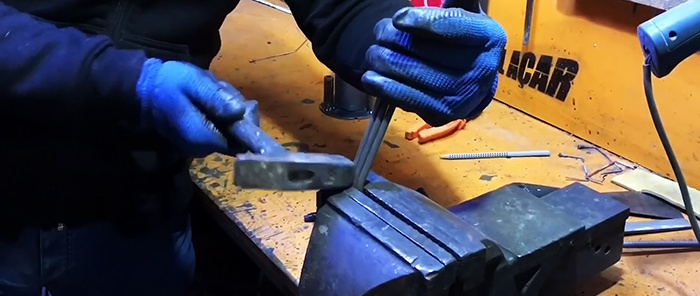
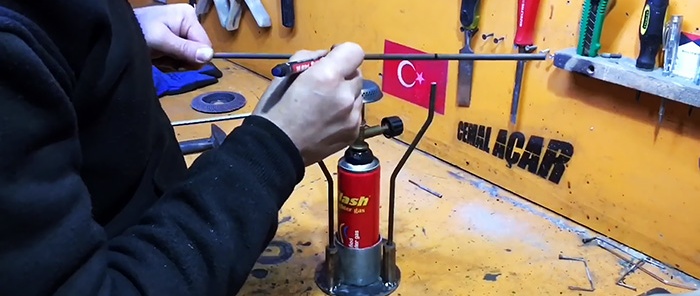
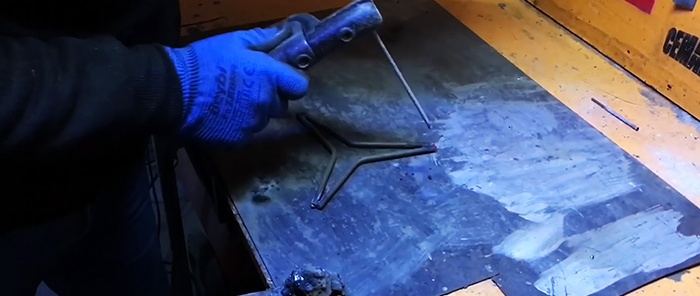
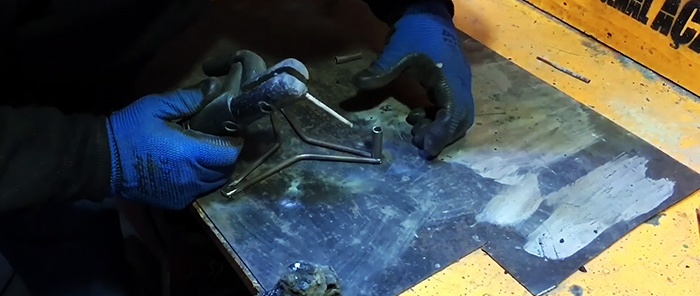
The result is a completely dismountable, very compact, safe and reliable design. Moreover, in it the load from the dishes falls on the stand, the can itself simply stands at the bottom. This distinguishes the modified system from the original one for the Turkish cylinder, in which heavy dishes were held on the valve, which is not at all safe.
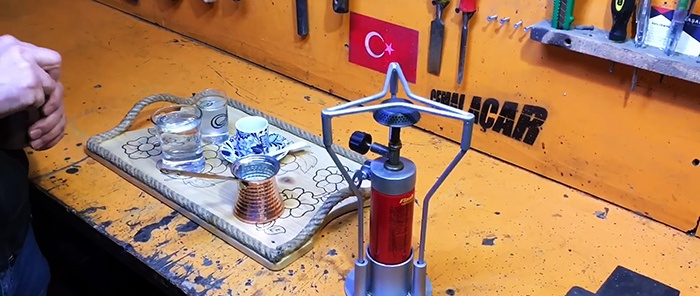
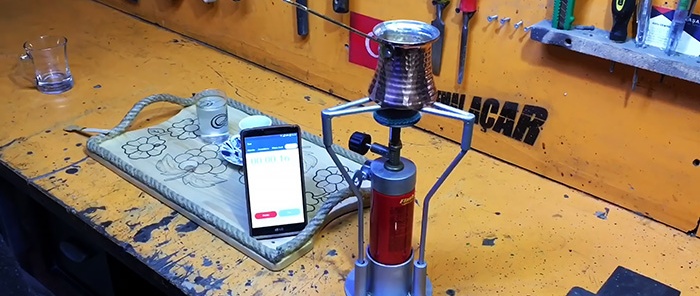
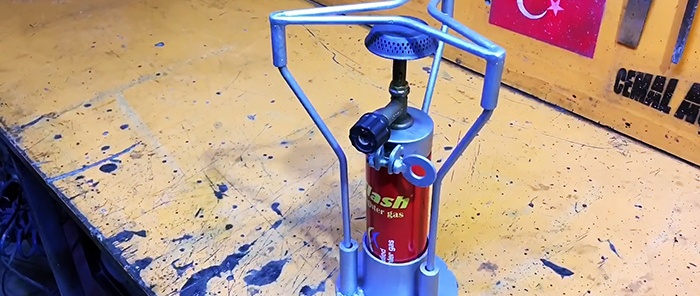

Materials:
- nut M14;
- sheet steel 1.5 mm;
- thin-walled steel pipe 50 mm;
- strip 20 mm;
- M6 bolt with nut and washer;
- faucet valve from a Turkish cylinder with a plate;
- rod 6 mm;
- tube with an internal diameter of 7-8 mm.
The process of making an adapter for a small cylinder and burners
To use shut-off valves from a Turkish cylinder on a regular gas cylinder, you need to make a reliable adapter. To do this, a ring is cut out of a pipe with a diameter of 50 mm. Its height should be equal to the distance from the edging (the connection between the cylinder wall and the lid) to the upper edge of the M14 nut placed on the lid.

The ring is cut lengthwise and stretched a little so that it fits onto the neck of the can in front of the edging.

Next, one edge needs to be bent so that it can be fixed to the edging. To do this, you will need an empty, opened gas canister. A ring is put on its bottom, tightened with a tie or tied with wire, after which its edge is tapped in a circle with a hammer. As a result, on one side the ring receives a slight concavity inward.
The ring is installed on the neck of an empty cylinder with a concave position on the edging, and a circle of sheet steel is welded to it on top.




Then lugs from the strip are welded to the edges of the ring. Holes are drilled into them into which a bolt and nut are inserted. The result is a fastening clamp. You can weld a washer onto the head of the bolt to make it easier to rotate by hand. You should also weld the nut to the eye so that it does not turn.




A hole with a diameter of 15 mm is made in the clamp cover. A valve from a Turkish cylinder is inserted into it, and an M14 nut is screwed onto it from the inside. After this, the nut is welded to the cover.




The resulting adapter can now be installed on a small cylinder and clamped onto it with a clamp, after which a tap and valve with a plate are screwed into it. To ensure a tight seal, a soft gasket should be placed between the can and the tap. Screwing in, the valve presses the valve stem, and gas is supplied to the valve.



Having finished with the most complex and important part, the adapter, you can make a stand and a rack of tiles. A three-beam stand is bent from a 6 mm rod to accommodate dishes of the desired diameter. Short tubes are welded to the beams. Next, the sole is made.To do this, take a piece of pipe 50 mm long, 60-70 mm long, cut lengthwise and stretched under the body of the cylinder. It is welded into the center of a sheet steel disk, and 3 short tubes are attached to the sides of it, like on a stand. Then the racks of the required height are bent from 3 rods. They are inserted into the sole, and a stand is placed on top of them. The cylinder with a valve and a plate is placed in the central pipe on the sole.






The result is a completely dismountable, very compact, safe and reliable design. Moreover, in it the load from the dishes falls on the stand, the can itself simply stands at the bottom. This distinguishes the modified system from the original one for the Turkish cylinder, in which heavy dishes were held on the valve, which is not at all safe.



Watch the video
Similar master classes
Particularly interesting
Comments (0)

